What’s the best direction to set your solar orientation? Is it better to install your panels split between East and West, or is North the better orientation to face solar panels in Brisbane? In this post, we’ll discuss what the answer has commonly been and the logic behind it. Next, we’ll test that logic with data we have collected from two of our Fronius systems that we monitor on solar.web. We’ll look first at average production each month, actual production on a clear winters day, and actual production on a clear summers day. With this data we’ll see how accurate the common consensus is. The results took me by surprise.
The traditional answer
Within the Brisbane solar industry, most people will tell you that the ideal location to place to put your panels is:
- North – if you are on an old 44-52 cent feed-in tariff and want to sell power back to the grid.
- East-West – if you are on a low 6-12 cent feed-in tariff, and you want to maximise your morning and afternoon production.
As systems we install today are always on the low 6-12 cent feed-in tariff, this study will assume we are looking to maximise self-consumption of the solar power: we want our solar to be producing power at times when we are likely to use it.
This short clip explains why often, an east-west is often considered better to maximise self-consumption.
We want our solar to be producing power at the times when we are most likely to use it.
A North vs. East/West case study
But how much sooner does an east/west solar panels produce power? To be honest, I couldn’t really give you an accurate figure until now.
Last week, Kellee scrolled through the data over 500 online Fronius systems we have installed with Fronius monitoring. She picked out two almost perfect case scenarios for us and compiled some pretty cool comparisons.
Both installations below have 25 Jinko 260W panels. They are running on 5kW Fronius Primo inverters, and this is where we are drawing the “actual” data from.The systems are located within 12 km of each other in the southern suburbs of Brisbane. Because we have 25 panels, the east-west had to be split unevenly.
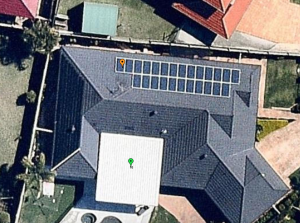
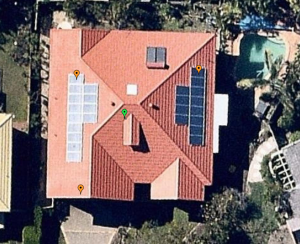
East-West vs North monthly production
The graph below overlays our estimated production (from the Nearmap solar tool) and the actual production from Fronius’s monitoring. The systems were only installed early 2016, so the data is less than a full year. We can see that both systems are performing around 5 percent better the Nearmap estimate, so the systems are a fair comparison.
The northern system produces more power in winter, where the east-west system is outperforming in summer (actuals).
Mid-Winter. East-West vs North
The graph below was from data on a clear day on the 29th of July 2016. In winter, as the sun sits low in the sky, the northern panels are tilted towards the sun. The increase in production of the northern roof is rather dramatic.
- The northern oriented system starts up much earlier because all 25 northern panels are operating, especially as they are slightly east of west. At the same time, our eastern facing panels are slightly south of east, so they are angled even further from the sun.
- The northern system has much higher lunchtime production in winter.
- The late afternoon production is just surpassed on the East/West roof as it slightly favours the afternoon sun, and has 13 panels.
Mid Summer. East-West vs. North.
The graph and table below most clearly quantifies where the east/west argument comes from.
- At 6 am you are producing more almost twice as much power than the Northern system.
- Both systems are clipped at 5kW during the middle hours of the day.
- Because the E/W system has 13 panels oriented slightly closer to north we see it outperforming only in the afternoon.
- Between 3 pm and 6 pm, the east-west system gives you more power. So in summer you are generating more power when you need it.
Conclusion
So which orientation is best to install your solar? Really it depends on how you use energy.
Do you have low wintertime consumption and a higher summertime consumption, with pool filters and afternoon air-conditioning loads? East-west may be a preferable option.
Are you more inclined to use a reasonable amount of power in winter, long hot showers and the reverse cycle air con running all day? A northern array may be more suited.
If you are a reasonably high user of power all year round, then it seems clear that the northern array is better suited.
As a whole, I was surprised to see that east/west arrays are not such a clear cut winner for systems on today’s 6-8 cent feed in tariff.


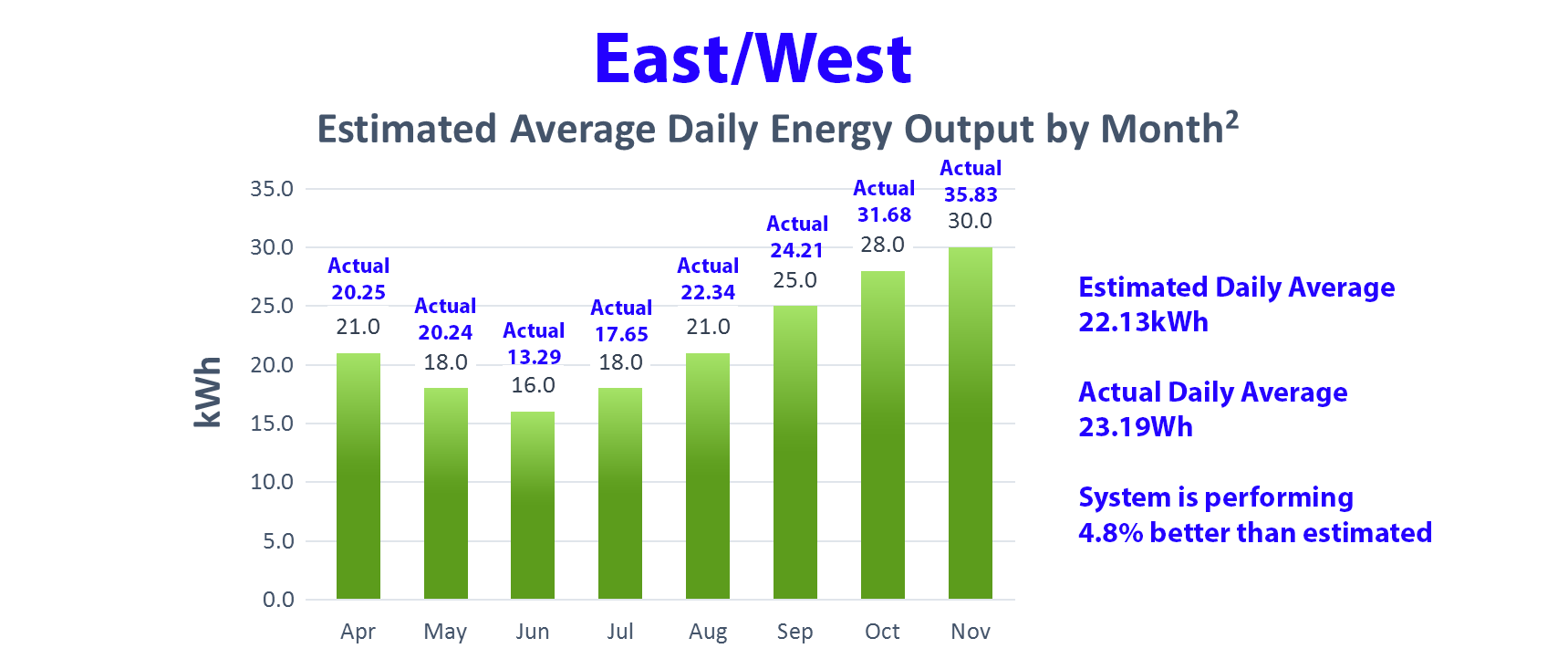
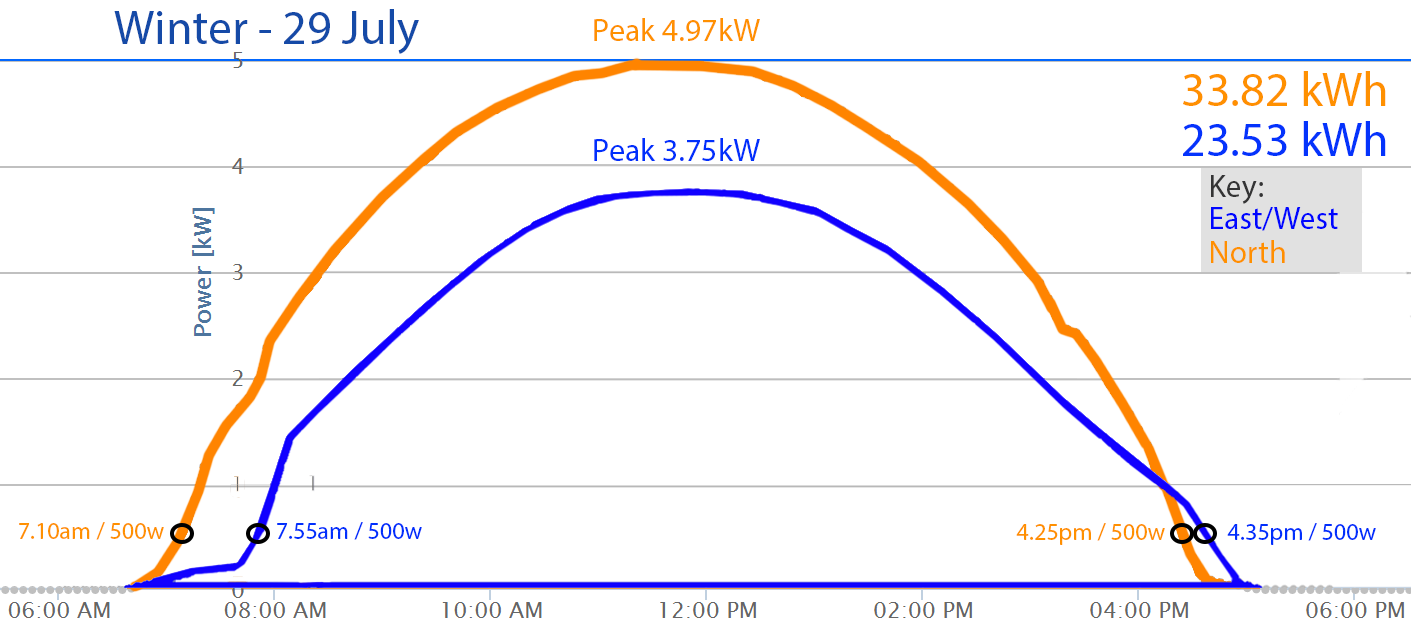
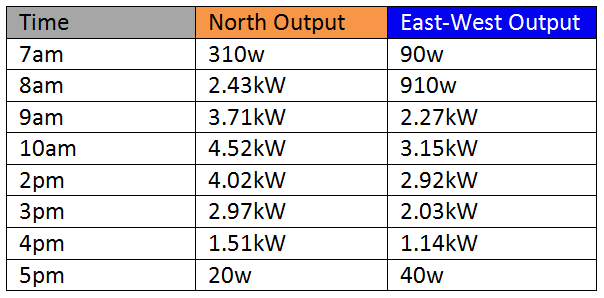
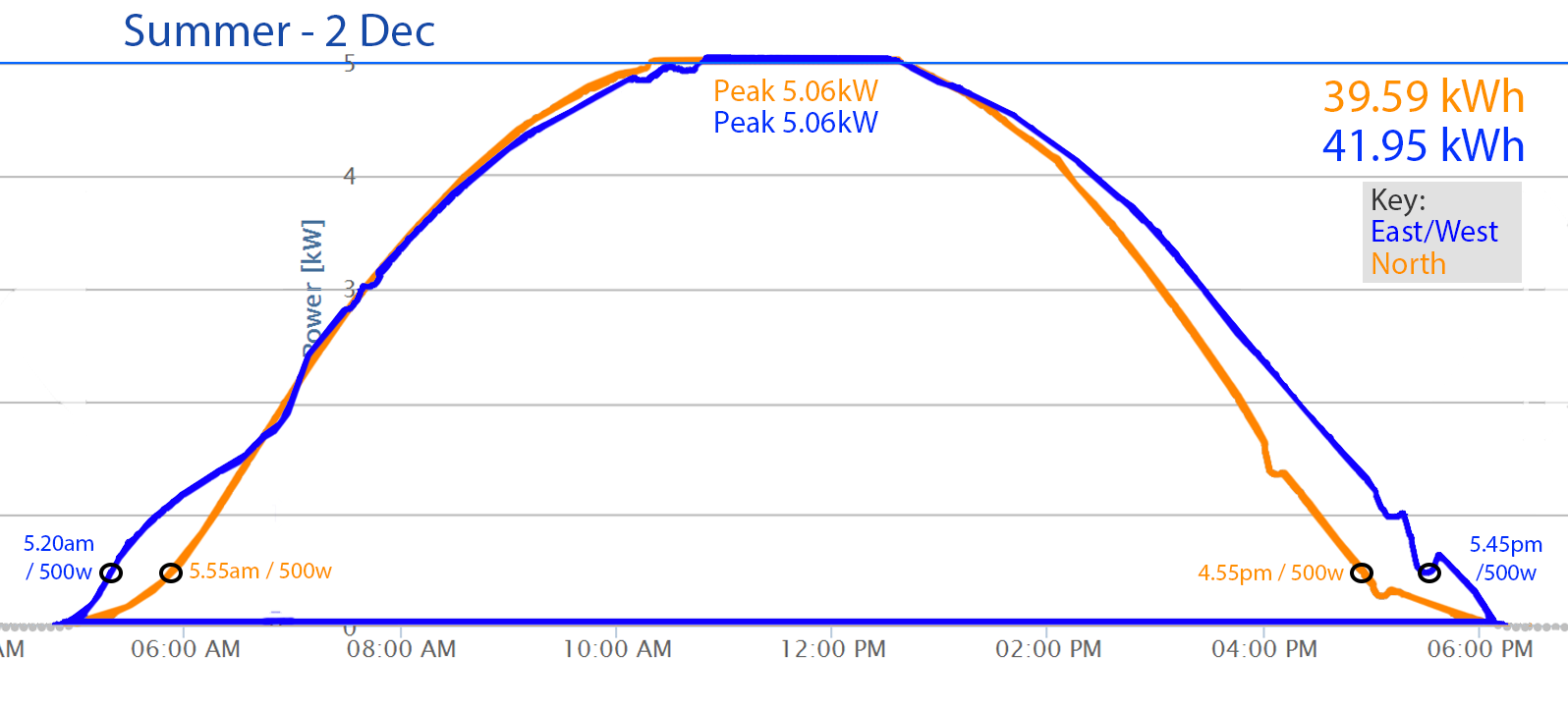
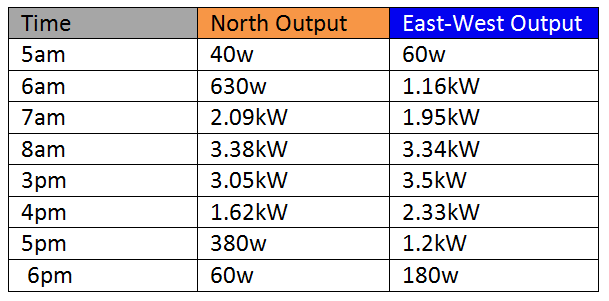

3 Responses
This info was really good Thankyou. Would be really good to see other orientation as well like straight west vs east etc . Cheers
Good point Paul. We should get onto that!
G’day Mark, great article thanks. Would you be able to publish the same daily graphs for spring and autumn? These are the months when the pool heater runs and I suspect would make the east-west array most beneficial? Cheers. Paul.